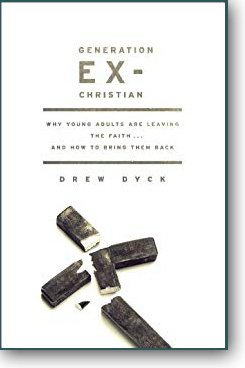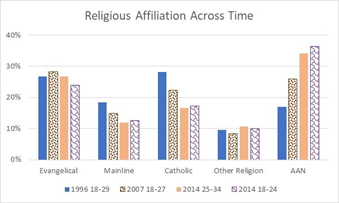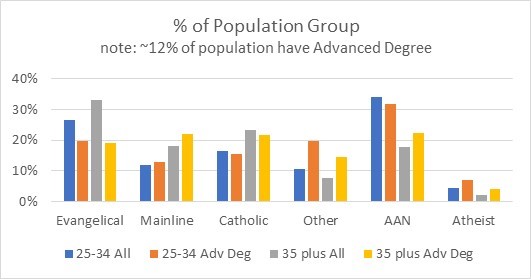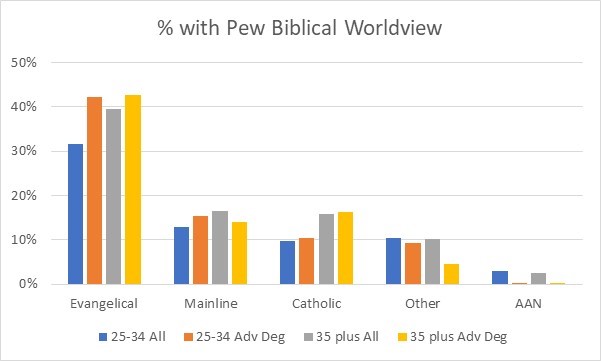Steve Cable examines the Second Amendment from a biblical perspective.
In today’s America, the Second Amendment invokes intense arguments regarding its meaning and application. Events like the Newton school, the Aurora movie theater, and the Tucson shopping center shootings bring sorrow to our minds and prayers to our lips. Some say the way to prevent these tragedies is to remove the right for individuals to own and carry firearms. Others argue that firearms carried by responsible individuals could have prevented much, if not all, the carnage of these mass shootings.
 Any discussion of the Second Amendment should begin by making sure we are familiar with the wording and the original meaning of this part of our Bill of Rights. The Second Amendment states: “A well-regulated Militia, being necessary to the security of a free State, the right of the people to keep and bear Arms, shall not be infringed.” Although we can reasonably assume the authors of the Bill of Rights and the people of that day felt that this was an unambiguous statement, it is not the case today.
Any discussion of the Second Amendment should begin by making sure we are familiar with the wording and the original meaning of this part of our Bill of Rights. The Second Amendment states: “A well-regulated Militia, being necessary to the security of a free State, the right of the people to keep and bear Arms, shall not be infringed.” Although we can reasonably assume the authors of the Bill of Rights and the people of that day felt that this was an unambiguous statement, it is not the case today.
Some believe that the phrase “the right of the people to keep and bear Arms” creates an individual constitutional right. This view is referred to as the “individual right theory,”{1} that legislative bodies are precluded from prohibiting firearm possession. Others argue that the phrase “a well-regulated Militia” means that it was only intended to restrict Congress from legislating away a state’s right of self-defense. This view is called the “collective rights theory.”{2}
In all likelihood, the authors intentionally combined these two thoughts. The states could not muster a militia of their people unless the people were allowed to keep arms. This view is supported by people involved in crafting and/or approving the Bill of Rights. Samuel Adams wrote, “The said Constitution be never construed to authorize Congress to . . . prevent the people of the United States, who are peaceable citizens, from keeping their own arms.”{3} Similarly, Noah Webster wrote, “Before a standing army can rule, the people must be disarmed; as they are in almost every kingdom in Europe. The supreme power in American cannot enforce unjust laws by the sword; because the whole body of the people are armed, and constitute a force superior to any band of regular troops that can be on any pretense, raised in the United States.”{4}
Does a Christian worldview provide guidance for our views on the Second Amendment? The Bible does not talk about guns, but does it provide instruction on this issue? In 1 Peter, we learn that governments bear the sword to implement justice. Under our Constitution, we, the people, are ultimately the ones who bear the sword to ensure justice.
The Second Amendment: Why Was It Added?
As discussed above, those responsible for the Second Amendment intended to ensure individuals could bear firearms legally. What concerns led to this original amendment to our constitution?
To understand, we should review the context for the introduction of the Bill of Rights. When the Constitution was sent to the states for ratification in 1787, two groups formed around adding a bill of rights to the Constitution, the Federalists and the Anti-Federalists. The Federalists supported the Constitution as written, believing that any attempt to list certain rights as remaining with individuals or states would be interpreted as making other rights subject to the federal government. The Anti-Federalists believed it was important to clearly state key fundamental rights over which the federal government would have no jurisdiction. Neither group was arguing against any of the Bill of Rights, but rather whether it was more effective to be silent or to list them explicitly.
The Federalists, who had the majority of delegates to the convention, were wrong in assuming that most people would agree with their hands-off approach. This situation led to many of the states ratifying the Constitution with the stipulation that a bill of rights be added. The right to bear arms was a common component of these stipulations. As James Madison wrote in the Federalist Papers, “The advantage of being armed, which the Americans possess over the people of almost every other nation . . . forms a barrier against the enterprises of ambition . . . The several kingdoms of Europe . . . are afraid to trust the people with arms.”{5}
When the first Congress met, James Madison presented a bill of rights before the members of the House. The first Congress converted these into twelve amendments which were sent back to the states for ratification in September of 1789. The language which would become the Second Amendment was essentially unchanged from that offered by Madison. On March 1, 1792, Thomas Jefferson announced the ratification of the United States Bill of Rights.
In Romans, Paul wrote, “But if you do what is evil, be afraid; for (governing authorities) do not bear the sword for nothing; for it is a minister of God, an avenger who brings wrath on the one who practices evil.”{6} However, if government officials hold all power, those who would control us will seek that power by taking over the government. In our constitutional system, the people are the ultimate governing authorities and thus are given the right to bear arms to protect the nation against those who would take over for the practice of evil.
The Second Amendment: How Is It Applied Today?
As noted previously, two different thoughts arose in interpreting the Second Amendment, namely the “individual rights theory” and the “collective rights theory.” Which view is supported by the Supreme Court?
In the most recent ruling of 2008, the court ruled the amendment confers an individual right to possess a firearm for traditionally lawful purposes such as self-defense. It also determined that the clause concerning a well-regulated militia does not limit the part which clearly states an individual’s right to keep and bear arms. Thus, the Court affirmed the “individual rights theory” of interpretation.
Remember, the framers of the Second Amendment were aware that guns held by individuals could be used for criminal activity. They felt that protecting individual liberty was more important than trying to create a perfectly safe environment. However, it should not be interpreted that everyone should have equal access to firearms. The Court has supported laws which 1) restrict those with mental problems or a criminal background in acquiring guns and 2) limit general access to specific types of weapons for mass destruction.
The difficult question is, when does the government cross the line into the realm of interfering with a person’s rights? First, what is meant by arms; does it include tanks, RPGs, etc.? Second, what could legally preclude a person’s right to bear arms? What type of personality or personality disorder makes it dangerous to others for you to carry a gun?
On the first question, the answer is not defined by what is needed for hunting or protection from thieves. From the perspective of the Founding Fathers, it needs to be weapons such that if a sufficient number of people possess them, the government is unable through the force of an army to impose any unconstitutional burdens upon the people. The Court’s position is that rifles and handguns are sufficient and that the government has the right to control other types of weapons.
The second question is equally difficult: how does one determine who is sane enough to have the right to bear arms? The Court has allowed this to be defined in terms of mental deficiencies, mental problems and a criminal background.
In 1 Timothy 2:1-2, we are told to pray for those in authority, that we may lead a quiet and peaceful life with all godliness and dignity. Our Constitution indicates that we are to take up arms as necessary to protect a government supporting godliness and dignity. It is reasonable to preclude those without a sane concept of a quiet and peaceful life from accessing firearms, which would always be a small minority of the populace.
The Second Amendment: Should It Be Ignored?
To this point, we have laid out the history and the status of our right to bear arms. We have three possible responses: 1) accept and obey this law, 2) ignore it as counter to God’s greater law, or 3) work to repeal the law. Let us first consider the question, “Is this a law that we should ignore?”
As spelled out in Romans 13 and 1 Peter 2, Christians are to uphold the laws of our land. Although no specific governmental system is promoted in the New Testament, we appreciate a system that protects our ability to worship God consistent with 1 Timothy 2:1-2. We support protecting the individual religious freedom offered by this country. At the same time, we want to limit robbery, murder and mayhem. How do these potentially conflicting desires relate to our view of the Second Amendment?
Remember, its underlying purpose is to ensure that our freedoms as individuals and as states are never trampled on by the federal government or others. The framers of the Constitution were worried about the tendency of large governments to attempt to consolidate their power at the expense of freedom. As Christians, we should desire to live in a society where we are free to worship God and share our faith with others.
In 1 Timothy 2:1-4, we see that we should pray for such a society because “This is good, and it is pleasing in the sight of God our Savior, who desires all people to be saved and to come to the knowledge of the truth.” As citizens of this nation, the Second Amendment makes it clear that we have a responsibility to protect our rights from those who would attempt to abuse their position, to maintain our freedoms including our freedom to live godly lives and share Christ freely.
In 2 Peter 2:13-14, we are to submit “for the Lord’s sake to every human institution,” whether to a king or his representatives. Within our structure of government, we submit to our Constitution and its principles. The Second Amendment calls for us (if needed) to be armed and ready as individuals to participate in a state militia or, in the absence of a militia, to act as individuals to protect our liberty. In 2008, the Supreme Court ruled that this also confers an individual right to possess a firearm for traditionally lawful purposes.
Clearly, the right to bear arms as defined in our Constitution and explained by Supreme Court rulings is not counter to biblical teaching. Therefore, we are to act in accordance with this amendment to our Constitution. Whether we should try to repeal this law is discussed below.
The Second Amendment: Should It Be Repealed?
If the Second Amendment creates more harm than good, we can support repealing it. The main argument for this position is that guns are used by some to harm the innocent. If guns are freely available to the citizenry, does the harm done outweigh the value envisioned by the Second Amendment?
Many innocent people have been killed by deranged individuals and criminals with guns; at the same time, we cannot remember a time when American citizens were called to the streets to protect our Constitution. Have we reached a point where the nature of today’s weapons and our society make the Second Amendment a detriment?
One group argues that if private ownership was illegal and strictly enforced, it would severely limit gun violence. An opposing view believes the problem is actually worsened by the lack of gun ownership by the public. If more law abiding citizens were armed and prepared to respond, the number of people killed would drop due to the deterrent effect.
What is the problem with repealing the Second Amendment? To have no guns among the citizenry, the government must be very proactive in removing guns from society as a whole. Guns must be removed from those not inclined to obey— a very difficult task as evidenced by the prevalence of alcohol during Prohibition. If accomplished, the government must assume unprecedented powers which may be fine as long as the Constitutional is not usurped. But if a future government decides to do so, there will be nothing to stop it.
Swords were used to kill people in Jesus’ day. Did Jesus rail against the presence of swords and demand that no one but soldiers should carry them? No, in fact, he told His disciples that he who had no sword should buy one because of the troubled days ahead.{7} Peter was carrying his sword in the garden when Jesus was arrested.{8} While Jesus kept Peter from interfering with His arrest, Jesus did not use that situation to initiate a “sword control” campaign.
Perhaps a more sensible way to control gun violence would be to encourage law-abiding citizens to carry weapons, particularly in public areas. This approach creates a deterrent against the insane, the criminal, and a future government gone amok.
According to Isaiah 2:4 and Micah 4:3, in the last days, swords will be beaten into plowshares and nations will no longer lift up the sword against other nations. We are clearly not in those last days now. Keeping the Second Amendment in place highlights our commitment to a government “of the people, by the people and for the people,” while we wait for Christ’s bodily return.
Notes
1. Second Amendment, Legal Information Institute, Cornell University Law School, www.law.cornell.edu/wex/second_amendment
2. Ibid.
3. Philip Mulivor, Proclaiming Liberty: What Patriots and Heroes Really Said about the Right to Keep and Bear Arms, Brightman Press, New York, 2011 quoting Samuel Adams, Amendment introduced on 6 Feb. 1788 in the Massachusetts ratifying convention, qtd. In Debates and Proceeding in the Cnvention of the Commonwealth of Massachusetts, Held in the Year 1788
4. Ibid., Noah Webster, “An Examination of the Leading Principles of the Federal Constitution.” Pamphlets on the Constitution of the United States Published During Its Discussion by the People 1787-1788.
5. Ibid., James Madison, “Paper 46,” The Federalist Papers.
6. Romans 13:4
7. Luke 22:35-38
8. John 18:10
©2015 Probe Ministries
 Are there others who are seeing the same degree of disconnect with the truths of Scripture in the life styles and life choices of young, adult Americans? I want to look at one such prominent voice speaking out about these same concerns. Drew Dyck is the author of Generation Ex-Christian: Why Young Adults Are Leaving the Faith . . . And How to Bring Them Back
Are there others who are seeing the same degree of disconnect with the truths of Scripture in the life styles and life choices of young, adult Americans? I want to look at one such prominent voice speaking out about these same concerns. Drew Dyck is the author of Generation Ex-Christian: Why Young Adults Are Leaving the Faith . . . And How to Bring Them Back


 First let’s look at their self-proclaimed religious affiliation as shown in the figure below. The color key shows age range and cohort (i.e., representing all survey takers or only ones with advanced degrees or “Adv Deg”).
First let’s look at their self-proclaimed religious affiliation as shown in the figure below. The color key shows age range and cohort (i.e., representing all survey takers or only ones with advanced degrees or “Adv Deg”). What about their religious beliefs? These are compared in the figure shown here.
What about their religious beliefs? These are compared in the figure shown here.